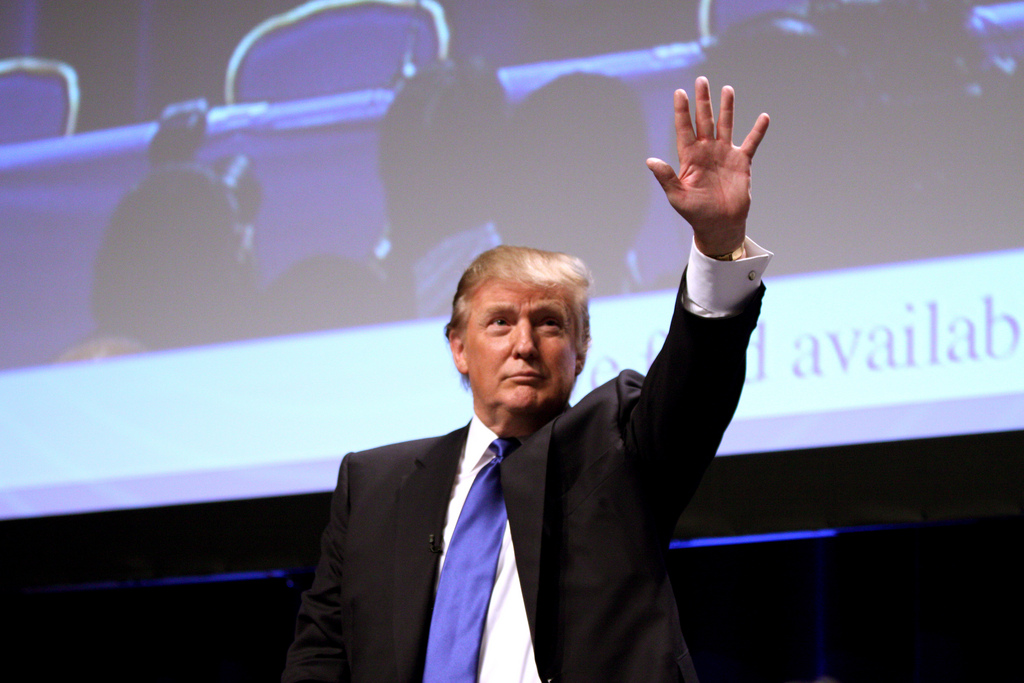
Is this going to be enough?
Nearly all last week President Trump firmly resisted using the Defense Production Act (DPA) to compel manufacturers to produce critical medical products in short supply as the coronavirus pandemic explodes across the United States.
“We’re a country not based on nationalizing our business,” the president said recently in one of his ratings-grabbing coronavirus press conferences. “Call a person over in Venezuela; ask them how did nationalization of their businesses work out. Not too well.”
This is (shockingly) a false argument from the president; the DPA doesn’t nationalize businesses. It’s been used for 70 years and hasn’t nationalized anything yet. You could use this law to prioritize production of everything from protective equipment for healthcare workers like facemasks to complex machines like ventilators that keep sick patients breathing – and then use it to allocate equipment to virus hotspots around the country. The administration has instead opted to encourage and cajole domestic manufacturers to retool and get this stuff made, and left it to state governments and hopsital systems to find this stuff on their own.
Then on Friday the president decided to use the DPA to compel a company to make medical equipment. One company. Trump got very angry at General Motors over costs and delays, and then GM got a DPA order.
Here's what happened: GM has partnered with a small medical device manufacturer called Ventec Life Systems to mass produce Ventec's breathing machines. The largest automaker in the world is essentially acting as Ventec’s subcontractor in order to get a large ventilator production line going, and the two companies presented the federal government with cost proposals for an initial run of equipment to be made at a GM factory in Kokomo, Indiana.
But after the Federal Emergency Management Administration (FEMA) delayed signing a deal so it could compare cost options – and GM’s estimates on how many ventilators it could quickly make shrank – the president in a series of tweets berated the company and then used the DPA-powered authority to order it to begin production.
As usual with “this” General Motors, things just never seem to work out. They said they were going to give us 40,000 much needed Ventilators, “very quickly”. Now they are saying it will only be 6000, in late April, and they want top dollar. Always a mess with Mary B. Invoke “P”.
— Donald J. Trump (@realDonaldTrump) March 27, 2020
This news was welcomed by many, particularly state governors who have pleaded with the White House to roll out the DPA broadly and effectively centralize the government response to the coronavirus. But bear in mind, Trump has only ordered one company – GM – to prioritize the production of this medical equipment.
Maybe seeing what happened to GM will induce more companies to retool their production lines to meet these needs. Maybe? But that's a risky bet with global supply chains disrupted by this pandemic. No one knows how much to make, or even if their products will be purchased if they are made. What if, for instance, the demand for these products is met by a wave of imports before they even make it off retooled domestic production lines?
At any rate, directing an individual company isn’t an effective way to organize a coordinated national manufacturing response. After all, many manufacturers around the country already are switching their production lines to make everything from facemasks to ventilators to even hospital beds. These companies want to help, but they need guidance on how best to help.
As a weekend editorial in the Dallas Morning News succinctly explains:
Invoking the Defense Production Act would break through the confusion in the private marketplace and set national priorities that would better guide resources to coronavirus hot spots. The White House must take more responsibility for ensuring that key protective gear and other equipment are being acquired and distributed where they are most urgently needed. Doing so would also discourage hoarding and price gouging.
And are they out there price gouging on crucial medical equipment during a health crisis? Oh you better believe they are, buddy.
As of this writing, there are nearly 141,000 confirmed cases of covid-19 in the United States. Cases are expected to continue to climb.

